MENTAL WELLNESS
What Is Mental Wellness?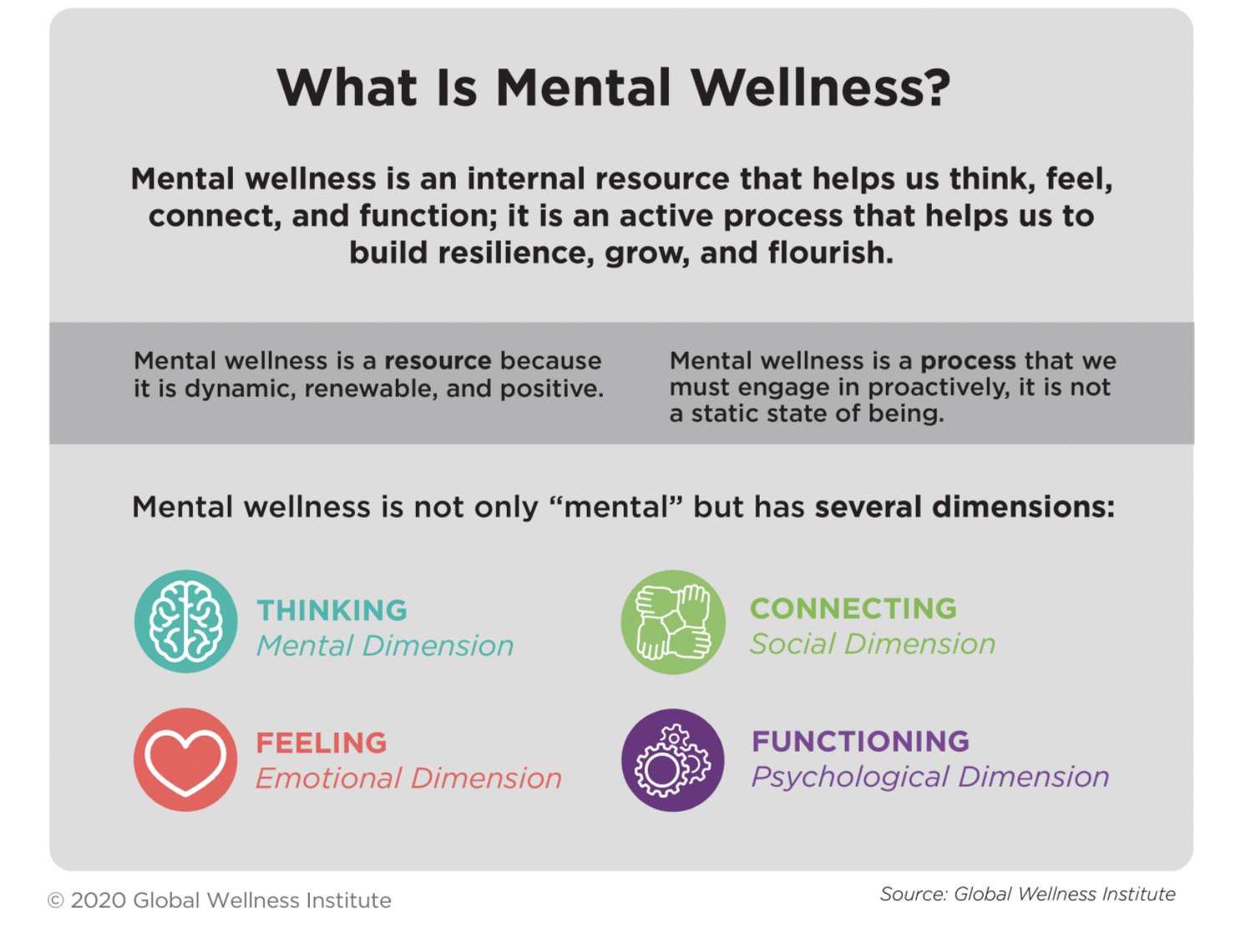 Five Key Things to Know About Mental Wellness
Five Key Things to Know About Mental Wellness
1. Mental wellness is more than just the absence of mental illness.
The complex relationship between mental illness and mental wellness is best understood by envisioning them sitting on two separate continuums (see figure below). The horizontal axis measures mental illness from high to low, while the vertical axis measures mental wellness from languishing to flourishing. About 85% of the world’s population does not have a diagnosed mental illness, but these people are not all “mentally well” or thriving because of pervasive stress, worry, loneliness and other challenges. On the other hand, those who have a diagnosed mental disorder can still have moderate or positive mental wellness (e.g., having good relationships, feeling happy, or functioning well at a job). Practices that increase our mental wellness are increasingly recognized as protective factors for our mental health, as well as helping reduce the severity and symptoms of mental illness (alongside conventional treatment regimens).
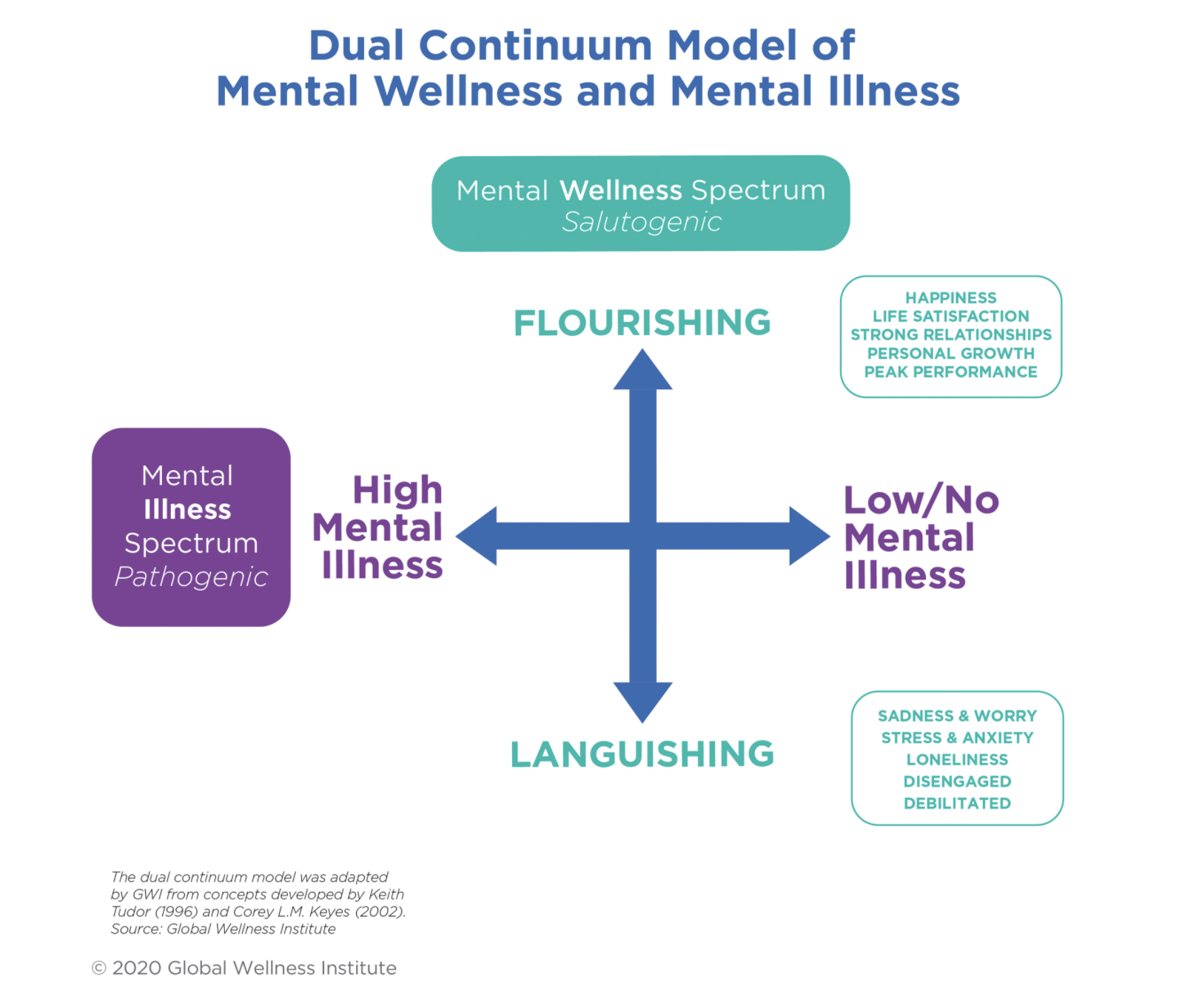
2. Mental wellness is an active process of moving from languishing to resilience to flourishing.
On one level, mental wellness is about prevention; coping with life’s adversity; and being resilient when we face stress, worry, loneliness, anger and sadness. On another level, mental wellness moves us toward a deeper, richer and more meaningful human experience, which is often described as flourishing. What it means to flourish is subjective and personal, and it is shaped by individual values, culture, religion and beliefs. For one person, it can mean functioning at the top of their game and achieving their life goals, while for another, it might mean self-transcendence.
3. Mental wellness helps to shift the perspective away from stigma to shared humanity.
Even though the mental health field has done a lot of work to mitigate the stigma surrounding mental illness, a sense of shame, denial and secrecy continues to afflict people in communities and cultures around the world. Mental wellness can help shift our focus toward a more positive and empowering approach (how we can feel, think, connect and function better), rather than just avoiding or coping with illness. It emphasizes our capacity to build resilience; to reduce suffering; to find inner peace and joy; and to seek meaning, purpose and connection—a universal longing shared by all people.
4. Mental wellness grows out of a grassroots, consumer-driven movement.
People desperately need non-clinical, non-pathologizing strategies to cope with everyday mental and emotional challenges like stress, burnout, loneliness and sadness. Evidence shows that improving our mental wellness can even reduce our risk of developing mental illness, but not enough attention is paid globally to mental illness prevention and mental wellness promotion. Consumers, practitioners and businesses have led the charge in seeking self-directed, alternative solutions outside of the established fields of medicine, psychiatry and psychology. They are bringing centuries-old natural and holistic mental wellness modalities into the mainstream, pushing science into areas where it has not gone before to consider the efficacy of ancient practices and emerging solutions.
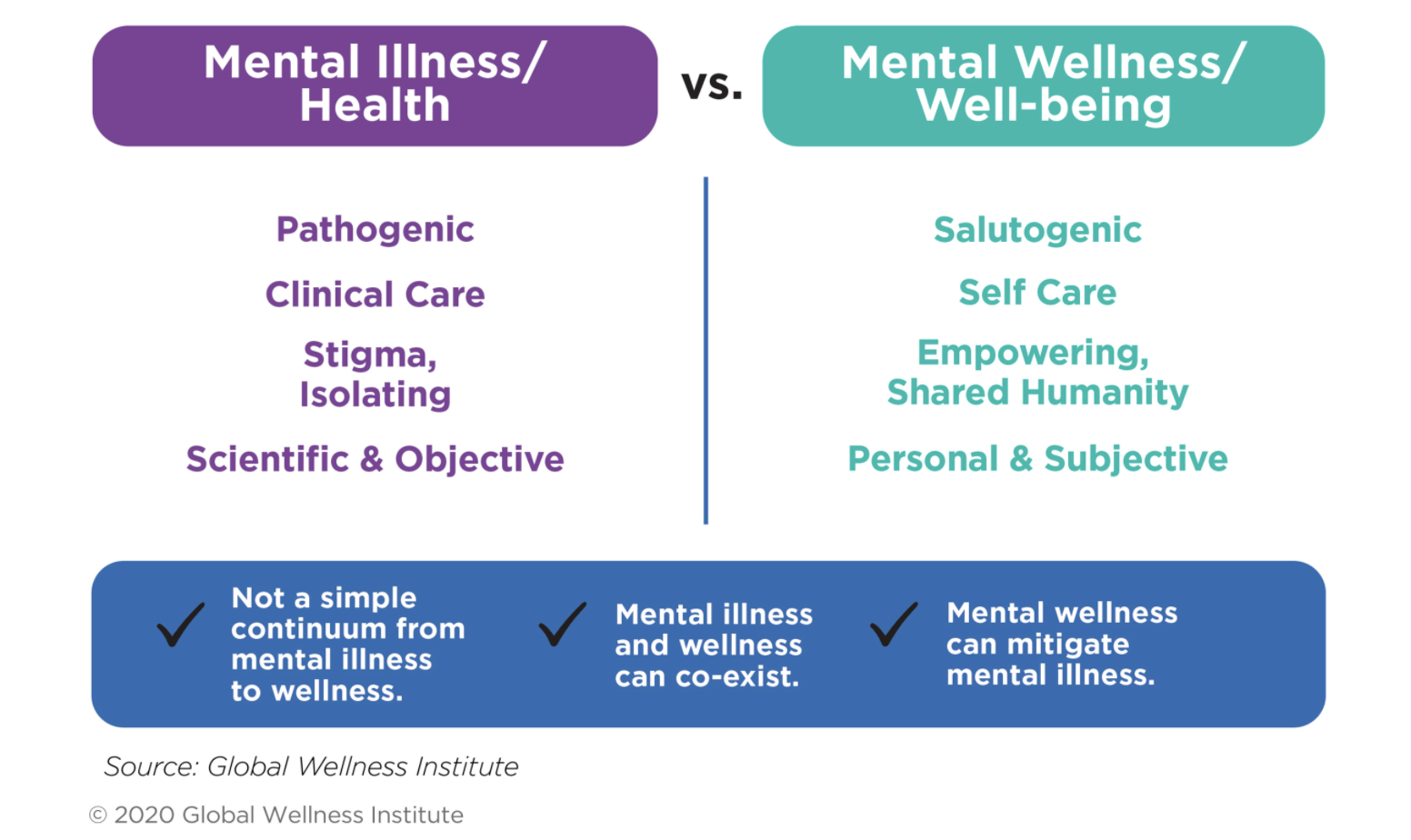
5. Mental wellness is multi-dimensional, holistic and personal.
Mental wellness recognizes the integrated and holistic nature of our health and wellbeing. The state of our mind affects our body and vice versa. Sometimes, when our circumstances change, we need to adopt new practices or strategies to handle stress, improve resilience, and deal with adversity. In this study, we segment the key strategies for mental wellness into four main pathways: activity and creativity, growth and nourishment, rest and rejuvenation, and connection and meaning. Each of these has mind-body and internal-external dimensions (see figure below). Together, they represent a menu of options for pursuing mental wellness; there is no set path, and people can choose the strategies and activities that are the most important or effective for them.
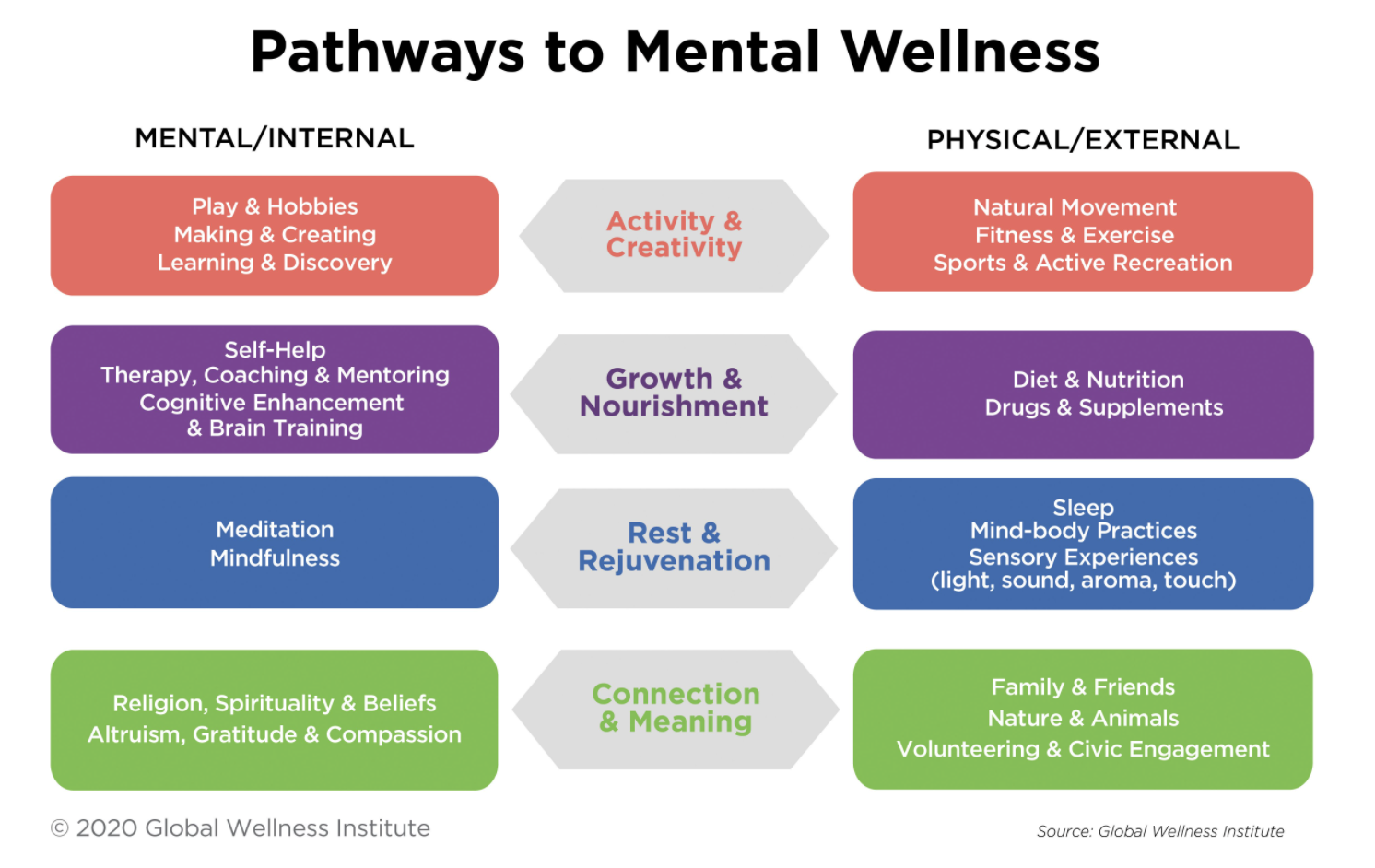
The Mental Wellness Economy
GWI defines the mental wellness economy as consumer spending on activities, products and services whose primary aim is to help us along the mental wellness pathways of growth and nourishment and rest and rejuvenation. It encompasses four subsectors:
- Self-improvement
- Brain-boosting nutraceutical and botanicals
- Meditation and mindfulness
- Senses, spaces and sleep
GWI estimates that the global mental wellness industry was worth $120.8 billion in 2019 (see figure below). This estimate represents consumer expenditures on the four subsectors that we have defined as part of the mental wellness industry; it focuses on proactive, wellness-focused, consumer- and private sector-driven activities (that is, things outside of the psychiatry, psychology and clinical/medical spheres). These figures are broad, global estimates that we aggregated based on a wide range of secondary data sources. [Note that the data presented here were extracted from GWI’s 2020 report, Defining the Mental Wellness Economy. Updated mental wellness data can be found at: Wellness Economy Data Series.]
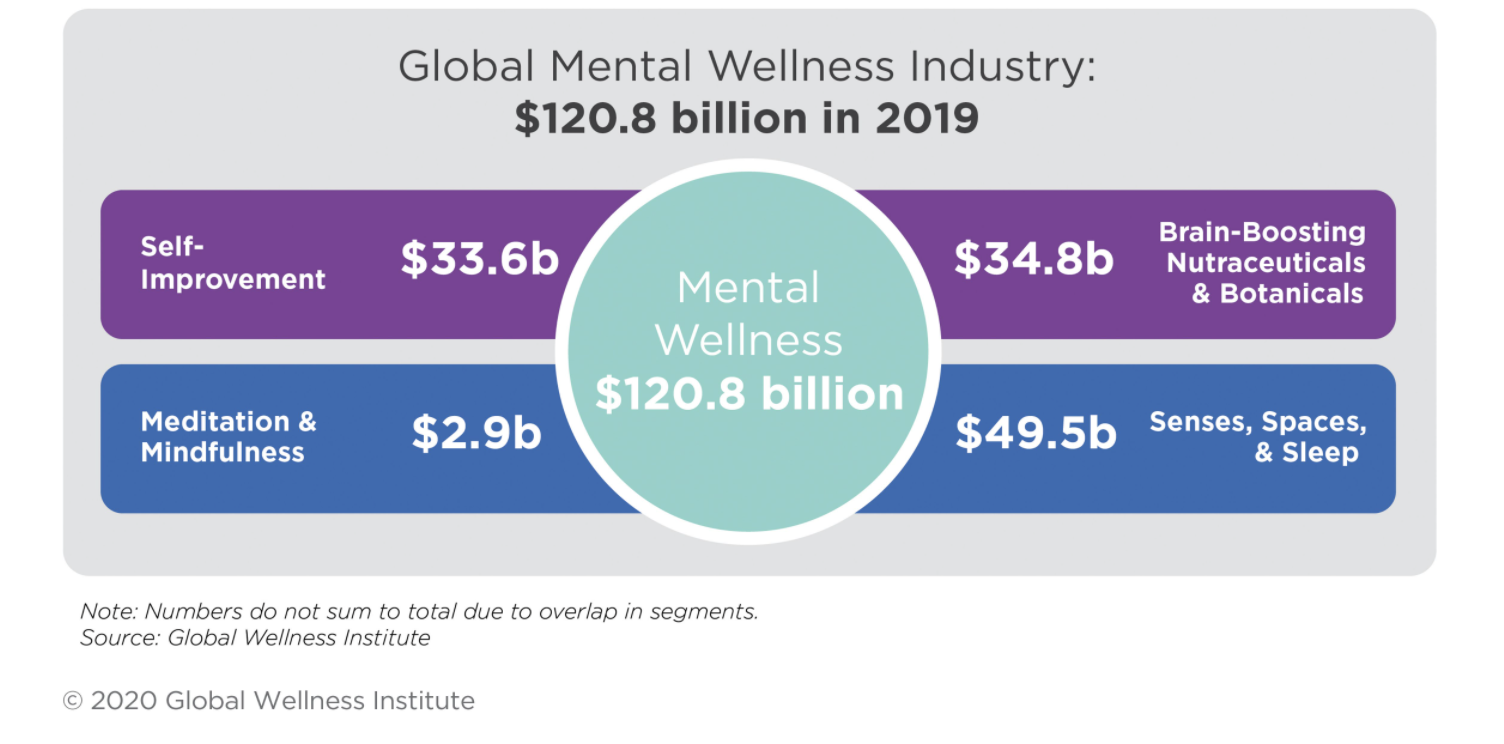
For more information:
- GWI’s 2024 report, Wellness Policy Toolkit: Mental Wellness, explores key challenges to our mental wellness, explains why we need to promote mental wellness, and offers specific policy actions that stakeholders can pursue to support all populations.
- GWI’s 2020 report Defining the Mental Wellness Economy is the first comprehensive study of mental wellness as an emerging global industry. The report offers a definition of mental wellness, clarifies concepts and outlines pathways, defines mental wellness as an industry for the first time and delineates its segments, estimates the size of the global wellness economy, and examines subsector trends and developments.
- GWI’s 2020 white paper Resetting the World With Wellness: Mental Resilience in a Time a Stress and Trauma looks at how the COVID-19 pandemic is taking a toll on the world’s mental wellbeing and how this acute stress could have a lifelong impact.
- GWI’s mental wellness figures are updated and released regularly in the Global Wellness Economy Monitor. For the most recent data and research, see Wellness Economy Data Series.
- Additional information and resources are available through GWI’s Mental Wellness Initiative.























































